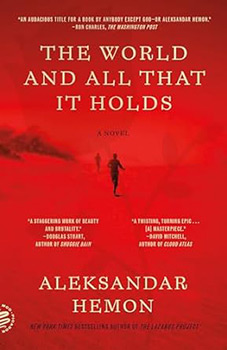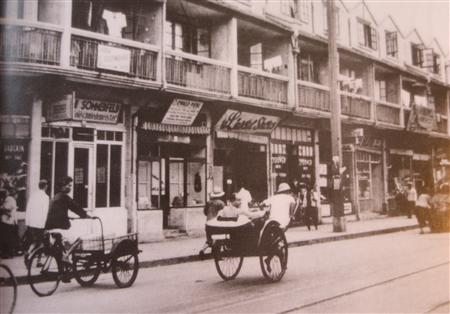Summary | Excerpt | Reviews | Beyond the Book | Read-Alikes | Genres & Themes | Author Bio

A Novel
by Aleksandar HemonThis article relates to The World and All That It Holds
 In Aleksandar Hemon's novel The World and All That It Holds, Rafael Pinto is a Sephardic Jew in Sarajevo at the beginning of the 20th century. When World War I erupts, he's flung east—first to Galicia, in what is now Ukraine and Poland, to fight for the Austro-Hungarian Empire; then to Tashkent, in what is now Uzbekistan, into a Russian prison; then, on foot, through the Taklamakan Desert. He has no passports or papers, no home to return to. He finally ends up in Shanghai, and lives there for almost 20 years.
In Aleksandar Hemon's novel The World and All That It Holds, Rafael Pinto is a Sephardic Jew in Sarajevo at the beginning of the 20th century. When World War I erupts, he's flung east—first to Galicia, in what is now Ukraine and Poland, to fight for the Austro-Hungarian Empire; then to Tashkent, in what is now Uzbekistan, into a Russian prison; then, on foot, through the Taklamakan Desert. He has no passports or papers, no home to return to. He finally ends up in Shanghai, and lives there for almost 20 years.
Indeed, Shanghai was a safe haven for more than 20,000 Jewish refugees in the 1930s and '40s. Most countries and cities had restricted entry for Jews trying to flee Nazi persecution in Europe. But Shanghai didn't require a visa to enter and had no limit on the number of Jewish people it would accept. As Ronan O'Connell writes in an article for the BBC, it was already a "multicultural oasis—that included British, French, American, Russian, and Iraqi residents," and had an established population of Russian Jews.
O'Connell explains that life for refugees was peaceful when they began settling in Shanghai in the early 1930s, with "a strong community with schools and a vibrant social scene." A large number settled in Hongkew, a neighborhood in the International Settlement, an area of sovereign Chinese territory formed from British and American settlements. Barbara Demick writes in an article for the Los Angeles Times that "So many Jews were here, along with cafes, cabarets, German bakeries, delicatessens, dance halls and music conservatories, that the neighborhood was nicknamed Little Vienna at the time."
According to the Holocaust Encyclopedia, Nazi persecution in 1938 and 1939 resulted in more than 17,000 new Jewish refugees fleeing Austria and Germany for Shanghai. Many had to live in "crowded, dilapidated housing." In 1941, the Japanese occupied Shanghai, then gathered up all the Jewish refugees in the city and forced them to live within a particular area of Hongkew. In this "Shanghai ghetto," as the residents called it, they dealt with food shortages as well as a lack of medical supplies and modern plumbing. They were banned from leaving the area, even for work, unless they received permission from Japanese officers; there was rampant disease and malnutrition.
And yet the majority of Shanghai's Jewish refugees survived World War II. Up to 14 million Chinese soldiers and civilians were killed during China's war with Japan from 1937 to 1945, but Jews weren't a primary target, unlike in Europe—and the refugees in Hongkew didn't suffer the same daily terrors that Jews in some other countries did. If Shanghai had not taken these refugees in, up to 20,000 more lives may have been lost in the devastation of World War II and the Holocaust.
A street in the "Shanghai ghetto," c. 1943, via Wikimedia Commons
Filed under People, Eras & Events
![]() This "beyond the book article" relates to The World and All That It Holds. It originally ran in February 2023 and has been updated for the
January 2024 paperback edition.
Go to magazine.
This "beyond the book article" relates to The World and All That It Holds. It originally ran in February 2023 and has been updated for the
January 2024 paperback edition.
Go to magazine.
Your guide toexceptional books
BookBrowse seeks out and recommends the best in contemporary fiction and nonfiction—books that not only engage and entertain but also deepen our understanding of ourselves and the world around us.